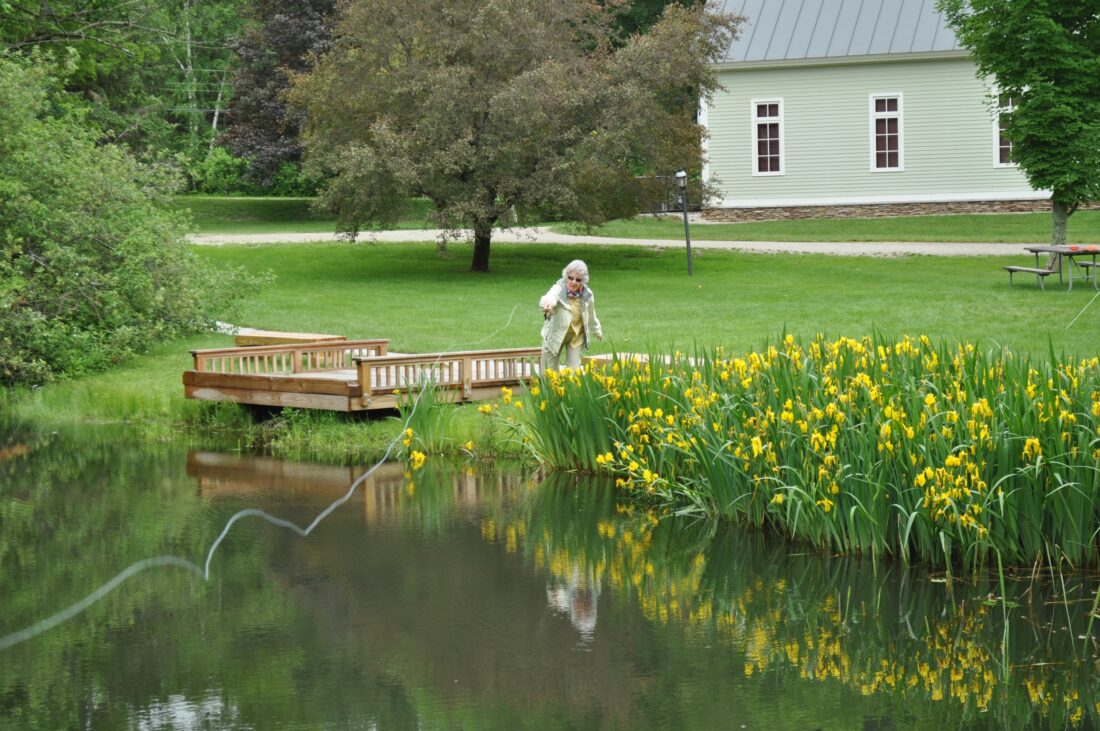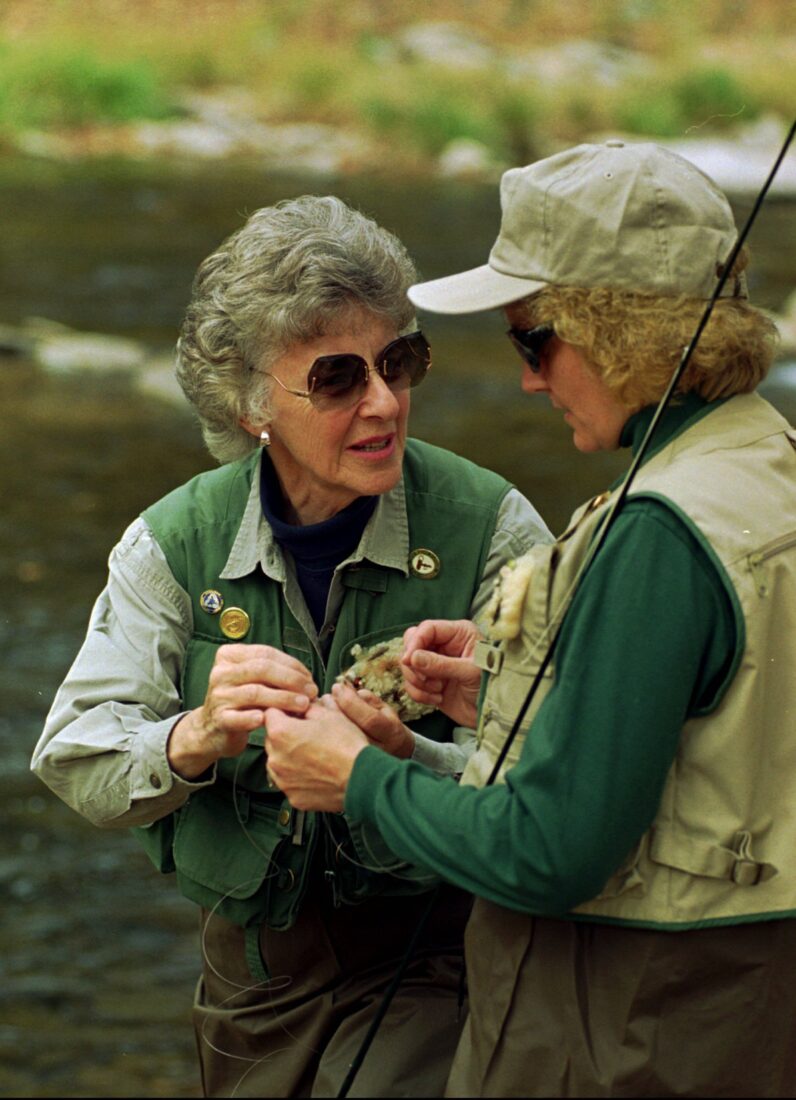With almost nine decades of experience in fly fishing, Joan Salvato Wulff has established herself as a living legend in the field, or rather, stream. From an early age, Wulff’s fascination with casting—and background in dancing—cultivated an expertise in the mechanics of the sport that would earn her a place in the International Game Fish Association Hall of Fame. As a sixteen-year-old in 1943, she claimed the title of Women’s Dry Fly Casting Champion. In the 1950s, she made history as the first female to win the National Fisherman’s Distance Fly Championship and become a paid spokesperson for a fishing company.

In 1967, Joan married Lee Wulff, dubbed the father of catch-and-release, and together the influential anglers fished rivers across the globe. Her gift for teaching shone when she and Lee established a fishing school, still in operation today, in New York’s Catskills. With recurring columns in both Fly Rod & Reel and Outdoor Life and multiple books to her name, Wulff has spent decades sharing her knowledge. At ninety-seven, she continues to do so. Below, she talks with G&G about her lifelong love for the sport and that time she cast a personal best of 161 feet.
What do you remember about fly fishing with your father, Jimmy?
I did not fly fish with my father until I had learned how to cast a fly rod. As he was involved with the Paterson Casting Club [in New Jersey], he did not invite me to fish with him, but I loved the look of it, and we lived near enough to where the club practiced so I could watch him. One day when Dad was at work and Mother was home, I asked her if I could borrow Dad’s fly rod and try what I had seen all by myself. She said yes, and I took it down to the dock, put it together, waved it around a bit—not knowing what I was doing—and it came apart and the tip went into the lake. So home I went, afraid of my father’s anger of course. But [the man] next door got home from work before Dad did, and he went down to the dock with a rake and managed to get the tip out.
Then I learned to fly cast in that club, and I went fishing with my father on the Musconetcong River in New Jersey. I started casting when I was ten, I caught my first trout on a fly at age twelve, and I’ve been on it ever since.
What about fly fishing captured your attention?
Well it’s something that still captures my attention, which is that you are dealing with the natural world, and water has all kinds of interesting things about it—how fast it moves, how rough it is, how calm it is. When you are fly fishing, we call it “reading the water” as to where trout would likely be lying comfortably; there’s the speed of the water, protection from predators overhead, and knowing what the trout eat—the insects that are in the river. That’s the basis of fly fishing.
Were there fly fishermen you looked up to as a young girl?
One of the members of the casting club took an interest in my casting and improved it. Let me just say, the casting club when I went into it was all about accuracy casting; we had targets that were put out between twenty-five and fifty feet, and that’s what you were set up with. The man who took an interest in my casting was also a distance caster, and that was different. Then, women didn’t do that, and I just loved it. I was teaching tap dancing at the time, in the days of Gene Kelly. The distance casting interested me because you had to use your whole body, from your fingertips to your toes.
What would you consider your greatest catch?
My biggest catch was marrying Lee Wulff, who was the primary person everybody looked up to in those early days for adventure in fly fishing. We were married in 1967 and he died in 1991, but by then, he had given me a great life traveling parts of the world where the fishing was best.

In what ways did the sport continuously challenge you?
Some fish are more difficult to catch than others, and so you just never take anything for granted. You’re always looking for the challenge, and these fish get smarter. Bigger fish obviously [get] smarter because that’s how they got to be big.
What’s a common mistake you see in casting?
That people make too many casts in between their presentations—a presentation is when you put that fly you’re casting either in a particular piece of water or on a particular fish. They usually cast too much, and their casting gets worse. The other thing is using too much force. It’s finesse. You have to be able to feel what the rod is doing and what the fly line on the rod is doing, and it’s really a matter of making loops—making an open-ended, unrolling loop forward and backward, so casting has two strokes, not one.
What’s the secret to casting a fly 161 feet?
A lot of practice! I did that with what was considered a heavy rod, and it was kind of a contest where there were men entered, so while I managed to cast 161 feet, the man who won that event cast 180 or something like that. I could never cast as far as a man because of the physical strength, but I did cast that 161 and it’s carried me through, kept me interested, and given me publicity.
This interview has been edited for clarity








